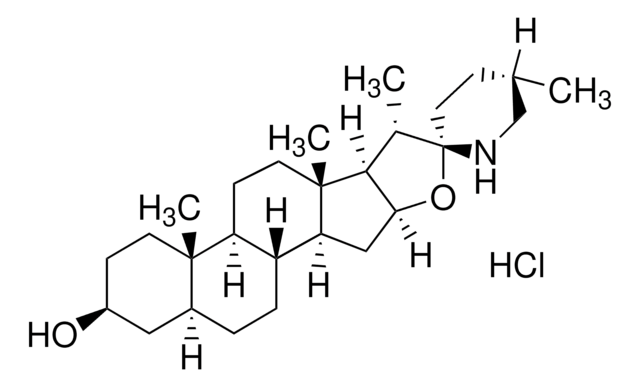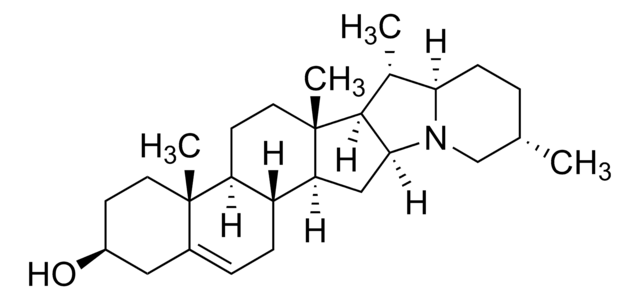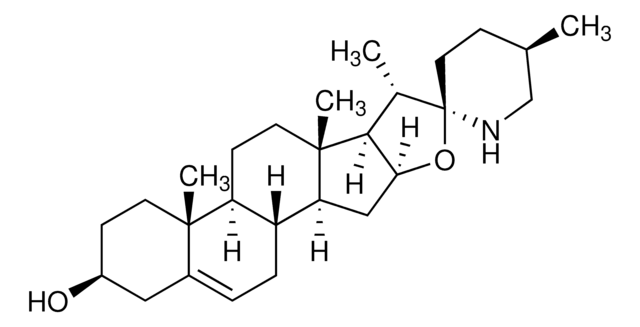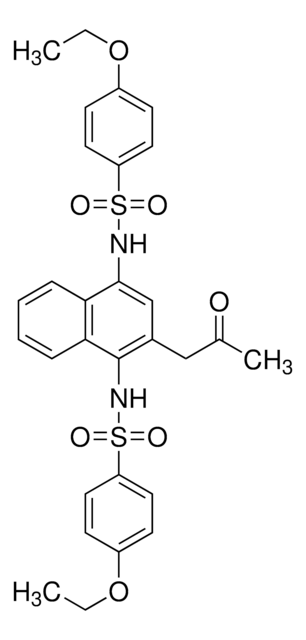T2909
Tomatidine hydrochloride
≥85%
Synonym(s):
3β-Hydroxy-5α-tomatidane hydrochloride, 5α-Tomatidan-3β-ol hydrochloride
About This Item
Recommended Products
Assay
≥85%
storage temp.
2-8°C
SMILES string
Cl[H].[H][C@@]12CC[C@]3([H])[C@]([H])(CC[C@@]4(C)[C@@]3([H])C[C@]5([H])O[C@]6(CC[C@H](C)CN6)[C@@H](C)[C@]45[H])[C@@]1(C)CC[C@H](O)C2
InChI
1S/C27H45NO2.ClH/c1-16-7-12-27(28-15-16)17(2)24-23(30-27)14-22-20-6-5-18-13-19(29)8-10-25(18,3)21(20)9-11-26(22,24)4;/h16-24,28-29H,5-15H2,1-4H3;1H/t16-,17-,18-,19-,20+,21-,22-,23-,24-,25-,26-,27+;/m0./s1
InChI key
SXXHVPYRDFJKPG-XRWUXUKGSA-N
Looking for similar products? Visit Product Comparison Guide
General description
Application
- to evaluate its effect on nasopharyngeal carcinoma using cell proliferation and flow cytometry assay
- as a negative control in the non-specific inhibition on hedgehog signaling in hepatocellular carcinoma cell lines
- as a control for cell growth assay and expression studies in pancreatic cancer cells
Biochem/physiol Actions
Signal Word
Warning
Hazard Statements
Precautionary Statements
Hazard Classifications
Acute Tox. 4 Oral
Storage Class Code
11 - Combustible Solids
WGK
WGK 3
Flash Point(F)
Not applicable
Flash Point(C)
Not applicable
Personal Protective Equipment
Certificates of Analysis (COA)
Search for Certificates of Analysis (COA) by entering the products Lot/Batch Number. Lot and Batch Numbers can be found on a product’s label following the words ‘Lot’ or ‘Batch’.
Already Own This Product?
Find documentation for the products that you have recently purchased in the Document Library.
Customers Also Viewed
Our team of scientists has experience in all areas of research including Life Science, Material Science, Chemical Synthesis, Chromatography, Analytical and many others.
Contact Technical Service














